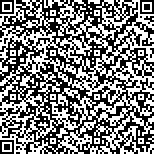| 摘要: |
|
| 关键词: |
| DOI: |
| Received:August 28, 2011Revised:December 19, 2011 |
| 基金项目:This work was supported by the National Natural Science Foundation for Distinguished Young Scholars of China (No. 60825304), the National Basic Research Development Program of China (973 Program) (No. 2009cb320600), and the Open Project of State Key Laboratory of Industrial Control Technology (ICT1006). |
|
| Collaborative target tracking in WSNs using the combination of maximum likelihood estimation and Kalman filtering |
| Xingbo WANG,Huanshui ZHANG,Minyue FU |
| (School of Control Science and Engineering, Shandong University;School of Electrical Engineering and Computer Science, University of Newcastle) |
| Abstract: |
| Target tracking using wireless sensor networks requires efficient collaboration among sensors to tradeoff between energy consumption and tracking accuracy. This paper presents a collaborative target tracking approach in wireless sensor networks using the combination of maximum likelihood estimation and the Kalman filter. The cluster leader converts the received nonlinear distance measurements into linear observation model and approximates the covariance of the converted measurement noise using maximum likelihood estimation, then applies Kalman filter to recursively update the target state estimate using the converted measurements. Finally, a measure based on the Fisher information matrix of maximum likelihood estimation is used by the leader to select the most informative sensors as a new tracking cluster for further tracking. The advantages of the proposed collaborative tracking approach are demonstrated via simulation results. |
| Key words: Target tracking Wireless sensor network Maximum likelihood estimation Kalman filtering Fisher information matrix Sensor selection |

